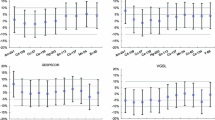Abstract
The requirements of high-precision gamma ray spectroscopy applications increasingly demand greater accuracy from analysis software, in terms of both the determination of nuclide activities and the quantification of measurement uncertainty. To this end, we report on recent work to implement enhanced analysis algorithms for the Genie 2000 software suite that account for the most important effects of correlations between analysis input data in a statistically rigorous way. These effects primarily arise through the calibration procedure, wherein a mathematical function is fit to a set of measured efficiency data points, inevitably resulting in correlations between calculated efficiency values at different energies. While these effects are often relatively small, and thus have historically been considered of minimal significance, they can have important effects on activity results in applications where high precision is called for, especially for multi-line nuclides. The impact of correlations on uncertainty quantification is often more apparent, and may be significant even when precision requirements are not as stringent. Correlation effects are often particularly noticeable in cases where the measured efficiency data are themselves correlated, as when calibration measurements are performed using sources containing multi-line nuclides. In this paper, we discuss the physical mechanisms by which correlations are introduced and describe the mathematical methods by which they are evaluated and propagated by the new algorithms. Quantitative examples are presented to demonstrate the improvement on analysis output.




Similar content being viewed by others
Notes
In principle, the areas of peaks fit as part of a common multiplet region will be correlated; however, at least in HPGe spectra, this will be a fairly uncommon circumstance for interfering nuclides.
References
Genie 2000 customization tools manual V3.4 (2013) Mirion Technologies (Canberra) Inc., Meriden
van Rossum G (1995) Python tutorial. Technical report CS-R9526, Centrum voor Wiskunde en Informatica (CWI), Amsterdam
Berlizov AN (2006) MCNP-CP: a correlated particle radiation source extension of a general purpose Monte Carlo N-particle transport code. https://doi.org/10.1021/bk-2007-0945.ch013
Kirkpatrick JM, Russ W, Morris KE, Young BM (2014) In: Proceedings of the Institute of Nuclear Materials Management 55th annual meeting, Atlanta
Author information
Authors and Affiliations
Corresponding author
Rights and permissions
About this article
Cite this article
Kirkpatrick, J.M., Anderson, T., Oginni, B. et al. Correlation effects in gamma spectroscopy efficiency calibrations and their impact on activity and uncertainty quantification. J Radioanal Nucl Chem 318, 641–647 (2018). https://doi.org/10.1007/s10967-018-6087-7
Received:
Published:
Issue Date:
DOI: https://doi.org/10.1007/s10967-018-6087-7




